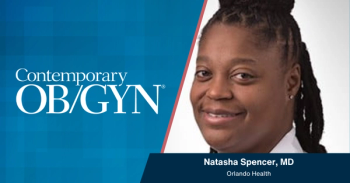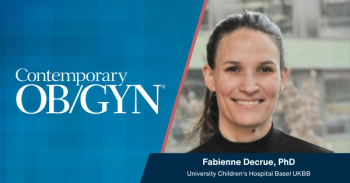
Mail-in HPV self-tests found to double cervical cancer screening rates
A new study finds that mailing human papillomavirus self-collection kits, especially with patient navigation support, significantly boosts cervical cancer screening rates.
Rates of cervical cancer screening (CCS) are significantly increased through the use of mail-in self-collection tests for human papillomavirus (HPV), according to a recent study published in JAMA Internal Medicine.1
Self-collection tests significantly improve cervical cancer screening rates
The data highlighted an over 2-fold increase in CCS participation among patients given self-collection tests and a telephone number, at 41% vs only 17% in patients receiving just a telephone number. This rate further increased to 47% through the inclusion of patient navigation support.
“These results show that self-collection testing could be a solution to increasing access to screening and, in turn, reducing the burden of cervical cancer in the US,” said Jane Montealegre, PhD, associate professor of Behavioral Science at The University of Texas MD Anderson Cancer Center.
Telephone reminder vs self-collection
Participants included patients underscreened in the safety-net health system, a setting designed to provide care to major populations living in poverty or other underserved groups.2 Additional eligibility criteria included being aged 30 to 65 years, no history of hysterectomy or cervical cancer, 2 or more ambulatory visits in the past 5 years, and no cytology in the past 3.5 years.
Patients with no telephone contact information in their electronic health record, a named primary care clinician outside the health system, or documented cervical dysplasia in the past 3.5 years were excluded. Participants were randomized into a telephone reminder (TR) by a patient navigator, TR with mailed self-collection (SC), or TR, mailed SC, and patient navigation group.
Relevant sociodemographic and health care characteristics included race and ethnicity, age, primary language spoken, tobacco use, health care coverage, and time since last screening. During the TR, patients were reminded of their need for CCS, given CCS education, and invited to attend clinic-based screening.
Self-collection kit details
A self-collection kit was given to patients in the SC and SC with patient navigation groups, which they were informed about during the TR. Kits were mailed to participants’ homes within 1 week of TR and included an Aptima Multitest Swab and Specimen Transport Medium (Hologic), invitation letter, instructional brochure, research information sheet, and return-addressed envelope.
The Aptima HPV test (Hologic) was used to identify HPV-16 and HPV-18/45 in returned kits. CCS participation within 6 months was reported as the primary outcome, determined by a returned self-collection kit by mail. CCS modality, CCS test positivity, and follow-up completion within 6 months were reported as secondary outcomes.
Participation and test results
There were 2474 participants aged a median of 49 years included in the analysis, 828 of whom were in the TR group, 828 in the SC group, and 818 in the SC with patient navigation group. Sociodemographic and health care characteristics did not significantly differ between groups.
A participation difference of 23.1% was reported among SC patients vs TR patients, with relative participation increased 2.36-fold among these patients. For SC with patient navigation, the participation difference compared to TR was 29.2%, and relative participation increased 2.68-fold.
When compared to SC alone, SC with patient navigation had a screening difference of 5.5% and was increased 1.13-fold. In these groups, 84.6% of patients participated in screening by returning an SC kit. Of these, 80.6% had a negative test result, while 1.2% were positive for HPV-16 or HPV-18/45, 12.6% for other high-risk HPV types, and 5.6% had a test that was unsatisfactory for testing.
Follow-up and implications
A positive test requiring follow-up was reported in 13.8% of participants, with a follow-up completion rate of 61.1% in the SC group and 68.8% in the SC with patient navigation group. An expected adverse event of mild discomfort was reported in only 1 patient in the SC with the patient navigation group, and no unexpected adverse events occurred.
These results indicated increased CCS participation from SC over TR. Investigators concluded these findings could inform practices in health care settings.
“By removing barriers, we are hopeful that we can improve the uptake of evidence-based screening tests and make significant progress against this preventable disease,” said Montealegre.1
References
- Mailed self-collection HPV tests boost cervical cancer screening rates. University of Texas MD Anderson Cancer Center. June 6, 2025. Accessed June 18, 2025. https://www.eurekalert.org/news-releases/1086501.
- Montealegre JR, Hilsenbeck SG, Bulsara S, et al. Self-collection for cervical cancer screening in a safety-net setting. JAMA Intern Med. 2025. doi:10.1001/jamainternmed.2025.2971
Newsletter
Get the latest clinical updates, case studies, and expert commentary in obstetric and gynecologic care. Sign up now to stay informed.
















